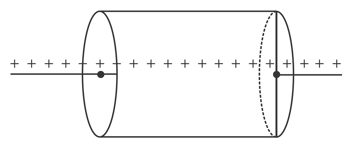Two non-conducting infinite plane sheets having charges and are placed parallel to each other as shown in the figure. The charge distribution on the four faces of the two plates is also shown. The electric field intensities at three points , and are , and , respectively. Then the magnitudes of , and are, respectively. (surface area of plates, )
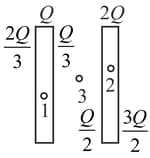

Important Questions on Electric Flux and Gauss's Law
Three large identical conducting parallel plates carrying charge and , respectively, are placed as shown in the figure. If and refer to the magnitudes of the electric fields at points and , respectively, then
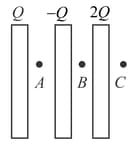
The electric field at one face of a parallelepiped is uniform over the entire face and is directed out of the face. At the opposite face, the electric field is also uniform over the entire face and is directed into that face (as shown in the figure). The two faces in question are inclined at from the horizontal, and (both horizontal) have magnitudes of and , respectively. Assuming that no other electric field lines cross the surfaces of the parallelepiped, the net charge contained within is
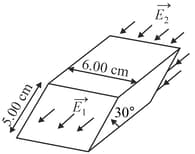
Flux passing through the shaded surface of a sphere when a point charge is placed at the center is (radius of the sphere is )
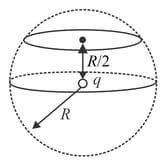
A uniformly charged and infinitely long line having a linear charge density is placed at a normal distance from a point . Consider a sphere of radius with as the center and . Electric flux through the surface of the sphere is
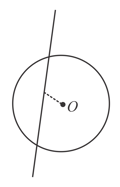
Two infinite sheets having charge densities and are placed in two perpendicular planes whose two-dimensional view is shown in the figure. The charges are distributed uniformly on the sheets in electrostatic equilibrium condition. Four points are marked and . The electric field intensities at these points are and , respectively. The correct expression for the electric field intensities is
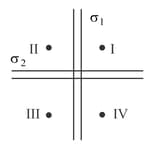
A positively charged sphere of radius carries a volume charge density (figure). A spherical cavity of radius is then scooped out and left empty. is the center of the sphere and that of the cavity. What is the direction and magnitude of the electric field at point ?

Consider an infinite line charge having uniform linear charge density and passing through the axis of a cylinder. What will be the effect on the flux passing through the curved surface if the portions of the line charge outside the cylinder is removed.
